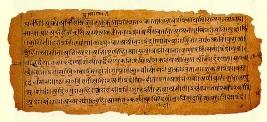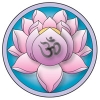
Two Zodiacs
While there are many differences in the two systems, the most important one is the zodiac. While both systems use the 12 signs we all know, they use different points of reference for Aries, the starting point of the zodiac. The tropical zodiac used by most western astrologers places 0 degrees of Aries at the spring equinox on March 21. The sidereal zodiac used by Vedic astrologers, however, use a fixed star reference from which to begin the first sign. The difference is due to a slow movement (one degree every 72 years) of the Earth and the solar system through the galaxy. This celestial phenomenon is known as the precession of the equinoxes. Two thousand years ago, there was no difference in the two zodiacs. Over time, the gap increased so that now there is almost a 24 degree lag between the tropical and sidereal zodiac.
Although both zodiacs may have their use in astrological work, the sidereal zodiac used by Vedic astrology is a more accurate representation of the stars in the sky. Using the star positions as the reference point rather than the Earth’s position relative to the Sun means that the stars that comprise the 12 constellations are placed correctly in the sidereal zodiac. Aldebaran is correctly placed in the constellation Taurus — the “bull’s eye” — rather than in Gemini as the tropical zodiac does, and Antares is properly placed in sidereal Scorpio rather than in tropical Sagittarius. When you look up at the sky at night, this is where you can find these stars, right in their proper constellations. In my experience, I believe the sidereal zodiac delivers better results, although some respected astrologers may still provide accurate predictions using the tropical zodiac. Given all the other factors that come into play in reading a chart, it’s possible to still make useful insights regardless of the zodiac one uses. Some astrologers with a working knowledge of both may even insist that “both” zodiacs may be correct: the sidereal positions of the planets may speak to some deeper, external truths like destiny and life outcomes while the seasonally-derived tropical zodiac of the Western world may better address consciousness and psychology. When I’m in a more expansive mood, I may be persuaded that this is the case. Nonetheless, the zodiac debate may continue for a long time to come as it may be very difficult to disprove one or the other.
|
Western/tropical
|
Vedic/sidereal | |||||
| Aries | Mar 21 | – | Apr 21 | Apr 13 | – | May 14 |
| Taurus | Apr 22 | – | May 20 | May 15 | – | Jun 14 |
| Gemini | May 21 | – | Jun 21 | Jun 15 | – | Jul 14 |
| Cancer | Jun 22 | – | Jul 22 | Jul 15 | – | Aug 14 |
| Leo | Jul 23 | – | Aug 23 | Aug 15 | – | Sep 15 |
| Virgo | Aug 24 | – | Sep 23 | Sep 16 | – | Oct 15 |
| Libra | Sep 24 | – | Oct 23 | Oct 16 | – | Nov 14 |
| Scorpio | Oct 24 | – | Nov 22 | Nov 15 | – | Dec 14 |
| Sagittarius | Nov 23 | – | Dec 21 | Dec 15 | – | Jan 13 |
| Capricorn | Dec 22 | – | Jan 21 | Jan 14 | – | Feb 12 |
| Aquarius | Jan 22 | – | Feb 19 | Feb 13 | – | Mar 12 |
| Pisces | Feb 20 | – | Mar 20 | Mar 13 | – | Apr 12 |
So about 3/4 of the people who have their Sun in one sign in the western system will actually have it placed in the previous sign in the Vedic system. Finding out that you’re Sun is actually in sidereal Sagittarius, for example, can be a bit unnerving at first, especially if you’ve grown up thinking about yourself as a “Capricorn”and have self-identified with those Capricornian traits. Identities and personality can be nebulous things without clearly defined boundaries or qualities. The only thing I would say to this conundrum is that it is important to recognize that the Sun sign — whether sidereal or tropical — isn’t the be-all and end-all of our astrological identity. Because there are 9 other planets each carrying their own portfolio of symbolism, there may be other ways in which that tropical Capricorn energy manifests itself in your horoscope, now that you’ve discovered that your Sun is in sidereal Sagittarius.
The Sun sign is not as central to the Vedic chart as it is to the western chart. When someone asks you “what’s your sign?” in India, they are not referring to your Sun sign. They are usually referring to your rising sign or ascendant, which changes every 2 hours or so during any given day. In my view, the rising sign may be a better shorthand way to understand a person’s essential orientation in life than their Sun sign. The Moon sign is usually next in importance for understanding the general contours of personality, with the Sun coming in third. But where the natal chart is not known, the Sun sign is still a good place to start.
Dashas: The Great Vedic Invention
The other central difference in the two approaches to astrology can be found in the Vedic concept of the “dasha” or planetary period. Essentially, the dasha system is a sequence in which planets exercise a disporportionate planetary influence on our lives for specified lengths of time. During the duration of the period of one planet, the individual will experience their lives according to the particular condition of that planet in their birth chart. So for example, if a person is currently running a Mars period in their chart and the Mars is placed in their 10th house of career and is conjunct the benefic planet Jupiter, then its very likely that the person will experience great success in their career for the duration of Mars’s period. Conversely, a person who has a badly placed Jupiter or Mercury that is afflicted by malefics will likely suffer some hardship during the time that its period is running in accordance with its house placement and rulerships. While some planets are considered benefic in their effects (Venus, Jupiter, Moon and Mercury), it is important to remember that the assessment of a dasha’s effects will usually have more to do the condition of the planet in the chart — it’s temporary condition — than its natural attributes.
In the most commonly used system, the Vimshottari system, this sequence is as follows:
- Ketu (south lunar node) 7 years
- Venus 20 years
- Sun 6 years
- Moon 10 years
- Mars 7 years
- Rahu (north lunar node) 18 years
- Jupiter 16 years
- Saturn 19 years
- Mercury 17 years
In total the cycle lasts 120 years, reflecting perhaps the length of an ideal human life. The place where the dasha sequence begins for each person depends on the position of their Moon or Ascendant, depending on which dasha system one is using. What’s important to note is that every person starts at a different place in the cycle, but everyone moves through this eternal ‘tape loop’ in the same way, so that the Saturn period always follows a Jupiter period, Mercury always follows Saturn, and Ketu always follows Mercury and so on.
The dasha system introduces another level of understanding of planetary movement that is invaluable for prediction. While both approaches to astrology maintain that events can occur when a planet is moving through the position occupied by another planet (called a “transit”) at the time of a person’s birth, the Vedic approach says this transit correlation alone is insufficient explanation of an event and will often lead to faulty predictions. Usually an event can only occur is there is an appropriate dasha period in effect. Taking our previous example of the person with the Sun-Jupiter conjunction in the 10th house of career, if Jupiter was transiting the same point in the sky as the Sun during the Sun period, then “that” would be a key moment in career development and would likely take the form of a promotion or raise. If however, a different planetary period was running, say, Mercury, then the positive effects of the Jupiter transit to the Sun would not be as strong. The astrologer would be more reluctant to predict good things for the client and depending on other factors, perhaps nothing beneficial to career would occur. All because the current dasha period was not conducive to career growth in the chart.
Click here to order an astrology reading


